![]()
![]()
![]()
Use LEFT and RIGHT arrow keys to navigate between flashcards;
Use UP and DOWN arrow keys to flip the card;
H to show hint;
A reads text to speech;
35 Cards in this Set
- Front
- Back
- 3rd side (hint)
|
Vascular Plants |
plants that have evolved complex transport systems more nutrients and water |
Trees are examples of _______ Mosses are not examples of ______ |
|
|
Lignin |
chemical found in the cell walls of plants for support |
_____ is found in vascular plants to provide support _____is found in cellulose |
|
|
Xylem |
cells used to transfer water and minerals around the rest of the plants from the roots |
hollow and tube-shaped responsible for the cohesion-tension hypothesis |
|
|
Phloem |
cells that carry organic nutrients around the plant using active transport |
longer and skinnier responsible for the pressure-flow hypothesis |
|
|
Tracheids |
type of xylem cells with holes that allow it to connect with other cells, used for water transport |
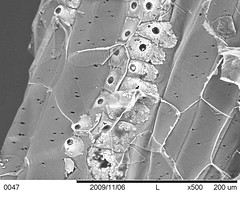
thick cell walls |
|
|
Vessel Elements |
type of xylem cells with openings at each end to be used for water transport |
thinner cell walls wider and shorter than tracheids |
|
|
Cohesion |
water molecules can stick to other water molecules |
_____ occurs through hydrogen bonds ______ is one of the factors that allows vascular plants to transport water against gravity |
|
|
Adhesion |
water molecules can stick to other polar molecules |
water attaches to the sides of xylem using ____ ___ and cohesion cause capillary action |
|
|
Sieve Tubes |
phloem cells create a chain together which works as a channel to transfer nutrients
|
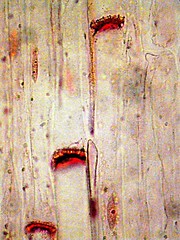
surrounded by companion cells |
|
|
Endosperm |
tissue that carries nutrients from a plant to an embryo |
created in the seeds of flowering plants provides mainly starch to the embryo |
|
|
Cotyledons |
a way for the embryo or seed to store nutrients and perform photosynthesis until leaves are grown |
sometimes called "seed leaves" __ also store nutrients from the endosperm |
|
|
Apical Meristems |
plant cells at the ends of the shoot and root of a plant that constantly split up |
a type of undifferentiated cell these cells develop others to become differentiated |
|
|
Seed Coat |
protective layer around the endosperm and embryo until it sprouts |
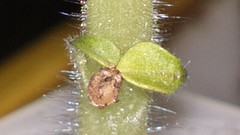
Ex. An outer layer of a nut |
|
|
Germination |
when the seed sprouts |
final step of an embryo becoming an individual plant jobs of the parent plant are now passed on to the embryo |
|
|
Primary Growth |
vertical growth of a plant due to growth at the meristems
|
redwood trees have a lot of ______ which is why they are tall cell divisions in the apical meristems supplies new cells for ______ |
|
|
Node |
areas on the plant where leaves will emerge
|
also called meristems looks like a place where the tree has a split |
|
|
Root Cap |
protective layer of cells on the apical meristem of the root
|
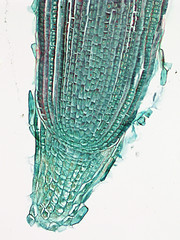
with the root pushing through soil as the plant grows a _____ is very helpful to keep it safe |
|
|
Epidermis |
outermost tissue |
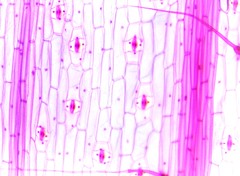
similar to human skin, only for a plant cell |
|
|
Cuticle |
protective covering over leaves |
the root cap for leaves
retains moisture |
|
|
Vascular Tissue |
layer of xylem and phloem cells
|

layer of tissue transports things throughout the cell |
|
|
Ground Tissue |
cells that provide support and shape to the inside of the cell |
layer also creates organic compounds some ___________ can become specialized |
|
|
Secondary Growth |
widening of a plant due to cell division in the vascular cambium |
horizontal growth
cause for the rings in a tree stump |
|
|
Vascular Cambium |
meristem tissue layer |
near the surface of roots and stems outer surface differentiates into phloem |
|
|
pericycle |
meristem tissue that surrounds the xylem and phloem in the roots
|
source of root branches
also know as root meristem |
|
|
PGR |
compounds that influence a plant's growth and development |
similar effect as hormones in animals
made by genes |
|
|
auxins |
chemicals that make roots grow longer and wider in low concentration, but shorter and skinnier with fruits from flowers in higher concentration
|
made in the apical meristems and seeds
effect depends on the concentration |
|
|
gibberellins |
makes stems grow longer, makes fruit faster and creates digestive enzymes in endosperm
|
produced in apical meristems and germinating embryos promotes development of fruit |
|
|
cytokinins |
regulates growth pattern, increases cell division, organ development, lateral growth of branches, and chloroplast development |
mostly made in fruits and roots cooperates with PGR and auxins |
|
|
abscisic acid |
tells the plant to close stomata make buds and seeds dormant and create storage proteins for seeds |
produced in dry conditions
helps to prevent unnecessary water loss |
|
|
ethylene |
ages tissues and prevents the effects of auxins and cytokinins |
stops development of lower branch buds
promotes digestion of organic compounds from old leaves |
|
|
tropism |
growth toward or away from a stimulus
|
_____ result from differences in growth between parts of an organ plants growing towards light is an example of a ______ |
|
|
phototropism |
growth toward a light source because of higher auxin concentration on the dark side
|
one side of the stem continues growing while the other stops, making it curve charles Darwin studied this |
|
|
gravitropism |
growth toward or away fro the Earth's gravitational pull |
results from auxins, PGRs and calcium ion concentrations
auxin play a big role in this |
|
|
photoperiodism |
how the plant grows based on the light and darkness during a 24-hour period |
When a plant flowers germinates and grows rapidly is dependent on part of this process
|
|
|
phytochrome |
pigment that tells the plant how long it is dark |
there are two forms of this absorbs far red light or regular red light |

